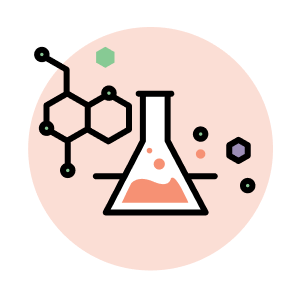Comprehensive environmental and social criteria with direct impact
Criteria in TCO Certified drive social and environmental responsibility in four key areas: climate, substances, circularity and supply chain. Our science-based criteria are continuously developed in line with our detailed and ambitious Roadmap for Sustainable IT. All criteria are mandatory and compliance is always independently verified.

IT brands are incentivized to implement emission-reduction activities that go beyond industry standards. Verified best practices are shared with other brands to speed up the pace of change.

To help increase renewable energy production, IT brands must purchase renewable electricity equivalent to 15% of their own consumption in final assembly factories. Purchases must be made using accredited systems.

Final assembly factories and display panel factories must have management systems for the environment (ISO 14001), and energy management (ISO 50001).

To significantly reduce annual emissions, products must be designed for a longer lifespan and supported with a warranty and free security and functionality updates for at least five years.

Products must meet the latest energy efficiency standards of Energy Star® or equivalent, and external power supplies must comply with the International Efficiency Protocol.
Packaging containing more than 20% plastic by weight must include at least 50% post-consumer recycled content. All parts weighing more than 25 grams must be separable without using tools.

Substances are risk-assessed by independent toxicologists, and safer alternatives are presented on the publicly available TCO Certified Accepted Substance List.

For more than 25 years, cadmium, mercury, halogenated flame retardants, lead and chromium have been banned from certified products and their packaging.

Flame retardants, plasticizers and stabilizers can only be used if they have been independently verified as safer alternatives, and placed on TCO Certified Accepted Substance List.

Cleaners and solvents used in manufacturing must be approved as safer and listed on TCO Certified Accepted Substance List. Workers must receive risk training and protective equipment.

We continuously gather information to find safer alternatives to additional high-risk chemical categories. Currently, IT brands must report their use of adhesives and lubricants in manufacturing.

The IT brand must support the products it manufactures for at least five years by providing product warranties and free security and functionality updates.

Products must pass durability and extreme temperature tests to ensure that they are designed for a longer life.

The battery must maintain good quality through many charging cycles and be replaceable using common tools, or tools provided for free with the product. Replacement instructions must be freely accessible.

An independently verified repairability score indicates how easy it is to maintain, reuse, and repair the product, covering disassembly, spare parts, repair instructions, and software updates.

The IT brand must provide service manuals explaining how to carry out component replacements free of charge.

Software that removes data from devices must be available free of charge.

Certified products must be marked with a unique product identifier, enabling digital product passports and the transition to more circular practices.

Criteria promote the first steps toward a structured framework that expands the reach of take-back programs globally and ensures a more sustainable approach to reuse and recycling.

Factories are categorized by risk level and high-risk factories are monitored more often. IT brands can select factories with a good rating, which is an incentive for factory owners to prioritize their work with sustainability.

The manufacture of certified products must comply with local labor and health and safety laws, the ILO’s core conventions, and the UN Conventions on the Rights of the Child.

To improve worker safety and well-being, and promote raised wage levels, workweeks are limited to 60 hours.

Brand owners must have an anti-bribery management system (ISO 37001) to prevent all forms of bribery in their operations.

To improve transparency, major sub-suppliers must be declared. Brand owners must appoint a Senior Management Representative to monitor and ensure compliance with supply chain criteria.

To ensure steady progress in supply chain responsibility, factories are audited regularly. High-risk factories are audited more often, and all issues must be corrected within a set timeframe.

We are driving industry engagement to responsibly source 3TG and cobalt by creating a structured system that promotes the use of RMAP conformant mineral smelters and refiners.

Final assembly factories and display panel factories must systematically manage environmental responsibilities in line with ISO 14001 (environment) and ISO 50001 (energy management).
